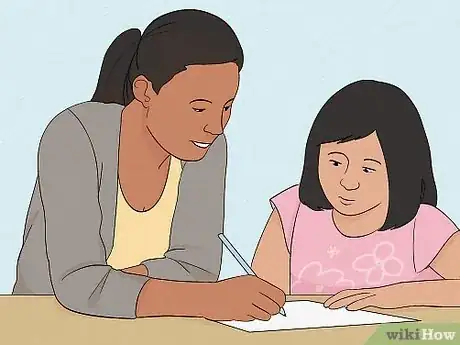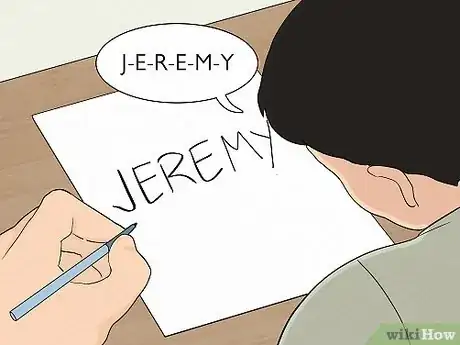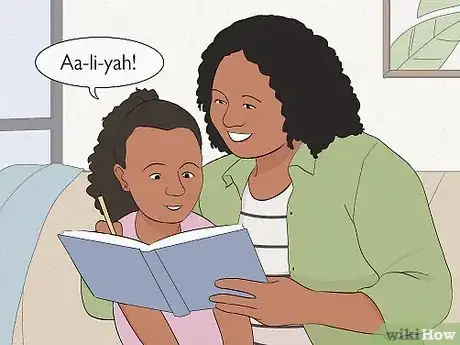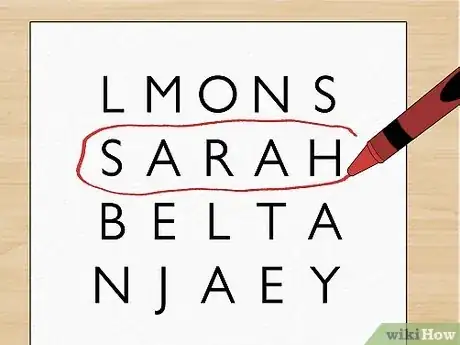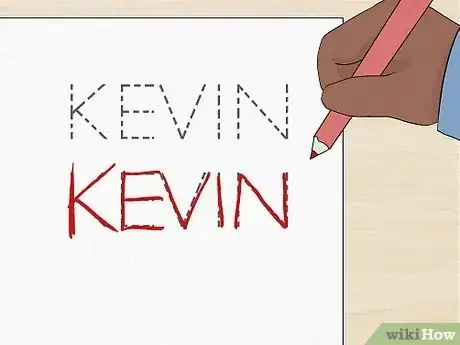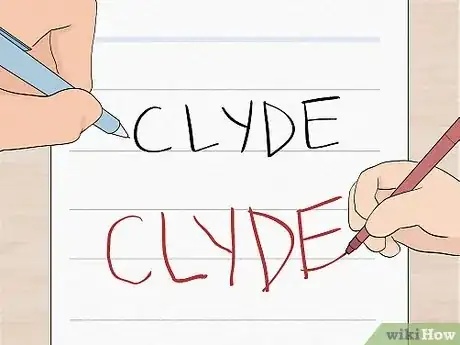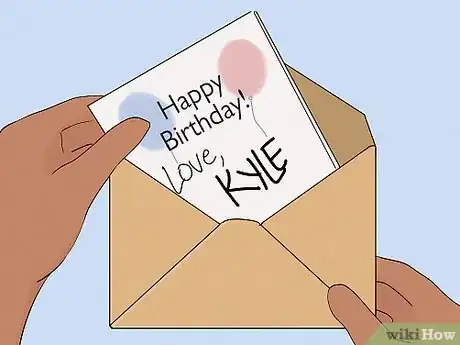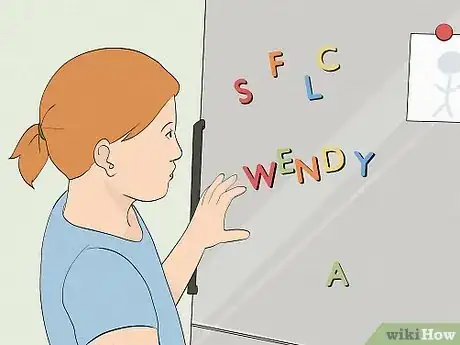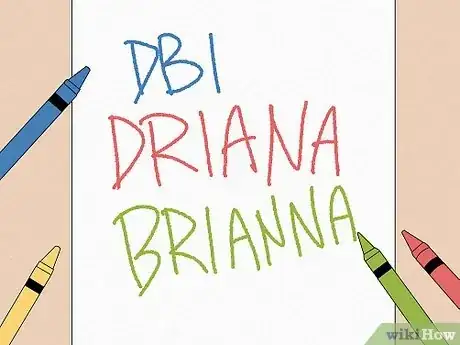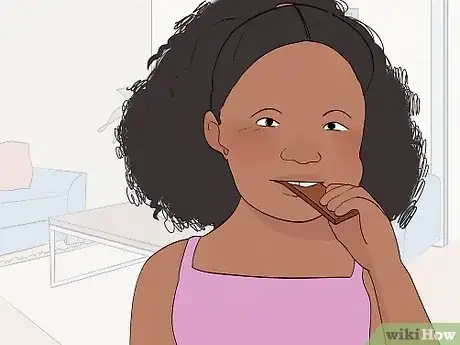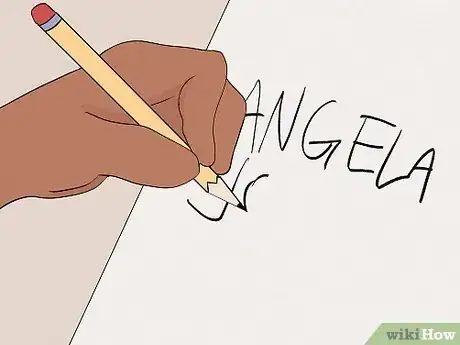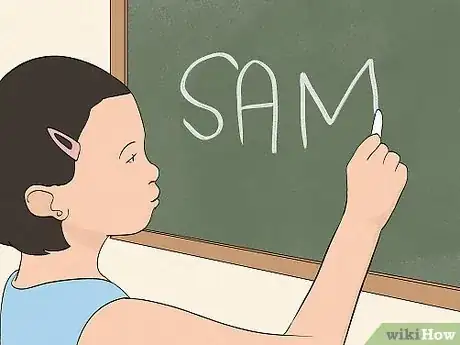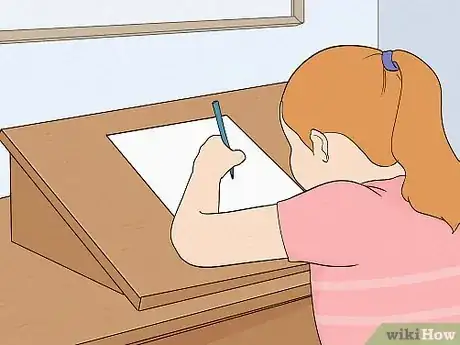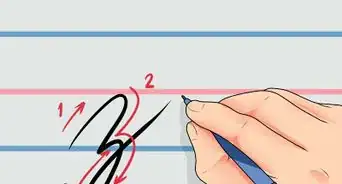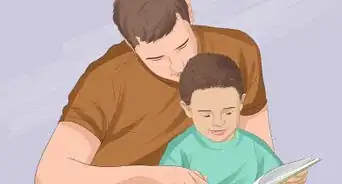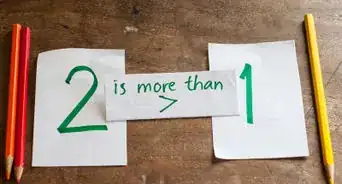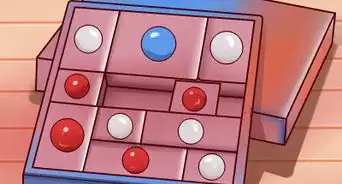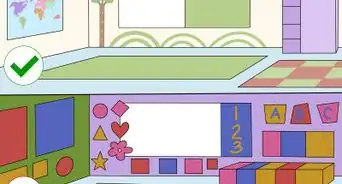This article was co-authored by Sylvia Rath. Sylvia Rath is a Parenting Specialist and the Director of Little Village Nursery School in Los Angeles, California. With over 30 years of experience, Sylvia guides parents through the preschool years and beyond by teaching respectful communication and positive discipline methods. Sylvia holds a BA in Psychology and Early Child Development from Antioch University. Before working at Little Village Nursery School, she taught preschool for eight years.
wikiHow marks an article as reader-approved once it receives enough positive feedback. In this case, several readers have written to tell us that this article was helpful to them, earning it our reader-approved status.
This article has been viewed 314,127 times.
It’s a proud moment for you and your child when they’re first able to write their name. Getting there takes some patient practice, however. Start by simply getting your child used to the letters of their name--point them out at every opportunity. When they’re able to start writing at least some of the letters, you can encourage them to keep trying by offering fun opportunities to write. At the same time, make sure to gently coach them on things like holding a writing instrument and holding a sheet of paper down.
Steps
Spelling Out Their Name
-
1Point out letters in your child’s name. Before they can write their name, children need to understand the connection between individual letters and the word. Draw their attention to the letters they need to recognize by saying things like:[1]
- ”See that ‘E’? That’s the first letter in your name.”
- ”’Veronica’ ends in an ‘a’ just like that one. Can you find the ‘a’?”
- Model writing names with capital letter, followed by lower case letters.[2]
-
2Write your child’s name, saying the letters as you do. Set an example by writing for your child. Make sure to work slowly, and stop to say each letter as you do:[3]
- Veronica, your name, is spelled V-e-r-o-n-i-c-a.”
- Label their items with their name.[4]
Advertisement -
3Ask your child to say the letters as you write them. Slowly write your child's name. Pause after each letter and ask them to say it. Be patient, and don't worry if your child mixes some letters up at first.
-
4Try a letter scavenger hunt. When you're out and about or even just reading with your child, help them hunt for their letters. They’ll have fun making spelling a game, and it will give them practice thinking about the order of letters in their name.[5]
- Make it simple by asking questions like “Ok, Natasha, can you find an ‘N’? How about an ‘A’?”
-
5Have your child trace the letters of their name. Write out your child's name in large, clear letters. Encourage them to take their favorite writing utensil and follow the strokes of the letters. Don't worry if the strokes are a little shaky at first!
- When your child is ready for more of a challenge, write the name in dotted lines. See if they can connect the dots to form the letters.
-
6Let your child copy their name. Write out the child's name on a large sheet of paper, leaving enough room for them to write the letters underneath. Ask them to try and copy their name just below your writing. That way, they can build confidence writing their name while still having a "cheat sheet" if they need help remembering how to form any letters.
-
7See if your child would like to take a turn on their own. Ask your kid if they want to try writing out the letters. Start with the first letter of their name, then see if they’re able to get the next one. They may not get any or all of them the first time around. If not, don’t push them, just keep practicing saying the letters of the name and try again later.
Making Writing Fun
-
1Give your child “real” opportunities to write their name. Sometimes children get a little bored or confused when they're asked to write their name just for practice. Letting them do things like sign birthday cards, gift tags, or put their name on art pieces gives them a real context for writing. They’ll feel like their name is important and have fun![6] [7]
- Even if your child doesn't write their name correctly at first, they’ll still develop a sense for why we write our names.
- If your child has a bunch of toys they want, suggest they make a wish list.[8]
-
2Let your child experiment with different media. Pencils, crayons, and markers are obvious choices for kids to practice writing. Some might respond better to non-traditional media, however. It's easy to mix in some fun while still teaching your child! Try things like:[9]
- Letting your kid write their name outside with sidewalk chalk.
- Writing with dry erase markers on a board or windows.
- Using cooked spaghetti to create the letters of your child’s name.
- Rolling out Play Doh and using it to form letters.
-
3Don’t worry if they make letters the “wrong way.” It’s normal for kids to mix up letters like “d” and “b” or “E” and “F” when they’re just learning to write. You might also notice that your child writes certain letters with upstrokes when downstrokes are the norm, and vice versa. When they’re just starting out, however, focus more on getting them in the habit of writing their name rather than getting everything one hundred percent perfect.[10] [11]
- The more your child practices, the better they will get at writing correctly.
- Once children reach school age, the work they do there will also help standardize the mechanics of writing.
-
4Try offering rewards when the child makes progress. A little motivation, like a piece of candy, can be helpful if the child seems reluctant to try writing their name. You could also tell the child that once they've learned to write their whole name, they can get a reward, like a trip to the ice cream shop. Or better yet, to the library!
- Many libraries will allow children to get their own library card as soon as they can sign their own name.
- Keep the rewards small and don't put too much emphasis on them. A child can become discouraged if they are struggling to write correctly and fail to get the reward.
Helping Your Child Make Progress
-
1Show your child the tripod grasp to improve hand control. Some children struggle to write their name because simply holding a pencil, crayon, etc. is something new. If your child is struggling to keep a pencil in their hand, teach them the tripod grasp, which just means keeping it between the thumb, index finger, and middle finger.[12]
- Give your child plenty of opportunities to scribble and draw even before they start to write their name.
- This will help them develop the fine motor skills they need to control a writing instrument.
- Switch to shorter pens and pencils if they tend to grab the pencil in their fist.[13]
-
2Try just a few letters at a time. If your child has trouble writing out their whole name, don't push them too much at first. Instead, give them just two or three letters to start with. This is really helpful if your kid has a long name.[14]
- For instance, say “Ok, Antonio. Let's see if you can get the first part of your name: A-N-T. Just like the bug!”
-
3Try practicing on a sloped surface. Children learning their name are probably also learning to hold paper down as they write. This can be a little tricky. Starting on a sloped table, an easel, or similar surface can make things easier.[15]
- You can also try a clipboard or something else that can hold the paper down.
- Once your kid is more confident writing their name, let them try on a flat surface.
Expert Q&A
-
QuestionHow do I know if my child is ready to write?
 Sylvia RathSylvia Rath is a Parenting Specialist and the Director of Little Village Nursery School in Los Angeles, California. With over 30 years of experience, Sylvia guides parents through the preschool years and beyond by teaching respectful communication and positive discipline methods. Sylvia holds a BA in Psychology and Early Child Development from Antioch University. Before working at Little Village Nursery School, she taught preschool for eight years.
Sylvia RathSylvia Rath is a Parenting Specialist and the Director of Little Village Nursery School in Los Angeles, California. With over 30 years of experience, Sylvia guides parents through the preschool years and beyond by teaching respectful communication and positive discipline methods. Sylvia holds a BA in Psychology and Early Child Development from Antioch University. Before working at Little Village Nursery School, she taught preschool for eight years.
Nursery School Director Children all over the world start as "minimalists" with maybe just one stroke of a brush. Then, they move to a scribble stage, and at around 3 they may make a circle followed by a circle with appendages off of it. This is the start of writing!
Children all over the world start as "minimalists" with maybe just one stroke of a brush. Then, they move to a scribble stage, and at around 3 they may make a circle followed by a circle with appendages off of it. This is the start of writing! -
QuestionHow can I help my child build motor skills for writing?
 Sylvia RathSylvia Rath is a Parenting Specialist and the Director of Little Village Nursery School in Los Angeles, California. With over 30 years of experience, Sylvia guides parents through the preschool years and beyond by teaching respectful communication and positive discipline methods. Sylvia holds a BA in Psychology and Early Child Development from Antioch University. Before working at Little Village Nursery School, she taught preschool for eight years.
Sylvia RathSylvia Rath is a Parenting Specialist and the Director of Little Village Nursery School in Los Angeles, California. With over 30 years of experience, Sylvia guides parents through the preschool years and beyond by teaching respectful communication and positive discipline methods. Sylvia holds a BA in Psychology and Early Child Development from Antioch University. Before working at Little Village Nursery School, she taught preschool for eight years.
Nursery School Director Building up the small motor skills to hold a pencil takes building up strength in the hands. Playing with blocks, making necklaces/beading, and working with clay help build up their muscles. Don't rush a child or make them do worksheets, or it will become a power struggle.
Building up the small motor skills to hold a pencil takes building up strength in the hands. Playing with blocks, making necklaces/beading, and working with clay help build up their muscles. Don't rush a child or make them do worksheets, or it will become a power struggle. -
QuestionWhich is better, plain white or lined paper?
 Community AnswerIf your child is just starting to write, lined paper would be better. As they get better, plain white paper will be fine as well.
Community AnswerIf your child is just starting to write, lined paper would be better. As they get better, plain white paper will be fine as well.
References
- ↑ http://www.colorincolorado.org/article/helping-young-children-develop-strong-writing-skills
- ↑ Sylvia Rath. Parenting Specialist. Expert Interview. 18 May 2021.
- ↑ http://www.readingrockets.org/sites/default/files/English.pdf
- ↑ Sylvia Rath. Parenting Specialist. Expert Interview. 18 May 2021.
- ↑ https://readingeggs.com/articles/2017/06/09/name-writing-practice/
- ↑ Sylvia Rath. Parenting Specialist. Expert Interview. 18 May 2021.
- ↑ http://www.parents.com/toddlers-preschoolers/development/writing/teaching-preschoolers-to-write/
- ↑ Sylvia Rath. Parenting Specialist. Expert Interview. 18 May 2021.
- ↑ https://www.everydayfamily.com/blog/fun-ways-teach-child-write-name/
- ↑ Sylvia Rath. Parenting Specialist. Expert Interview. 18 May 2021.
- ↑ http://www.parents.com/toddlers-preschoolers/development/writing/teaching-preschoolers-to-write/
- ↑ https://readingeggs.com/articles/2017/06/09/name-writing-practice/
- ↑ Sylvia Rath. Parenting Specialist. Expert Interview. 18 May 2021.
- ↑ http://www.readingrockets.org/sites/default/files/English.pdf
- ↑ http://www.parents.com/toddlers-preschoolers/development/writing/teaching-preschoolers-to-write/
About This Article
Teaching your child to write their name can take some time, but if you keep it fun and praise them along the way, they’ll get the hang of it. Start by writing their name yourself and getting them to say the letters with you. If they have a short version of their name, start with that to make it easier. Once your child can name all the letters in their name, get them to trace the letters over the top of yours. You can also write the letters in dotted lines and get your child to connect them. Try mixing things up by using crayons, chalk, or forming letters out of play dough to write their name. This will keep it fun and stop them from getting frustrated so easily. Make sure you reward them with praise and treats as they make progress. For more tips, including how to do a letter scavenger hunt to help your child learn the letters of their name, read on!
